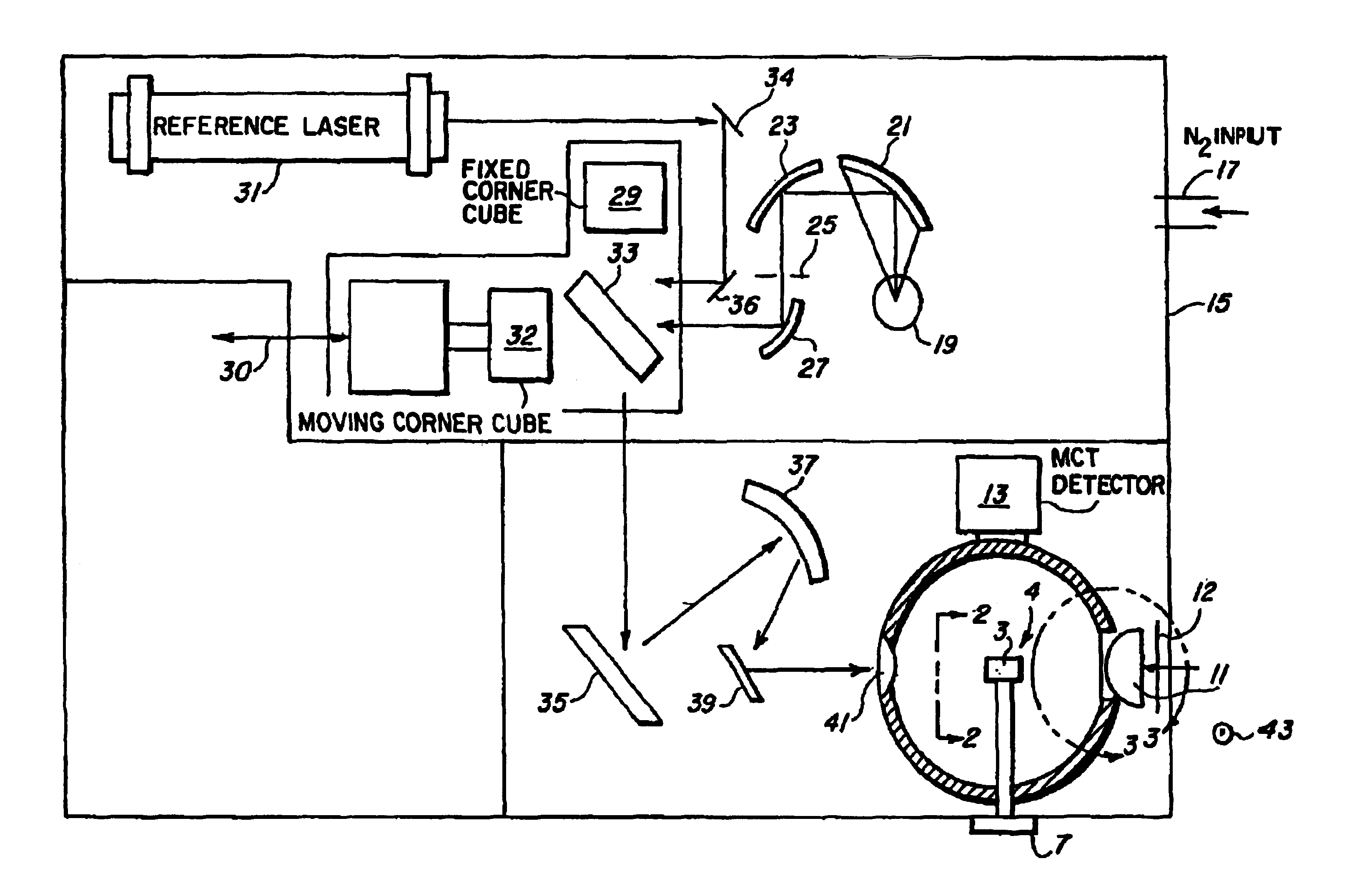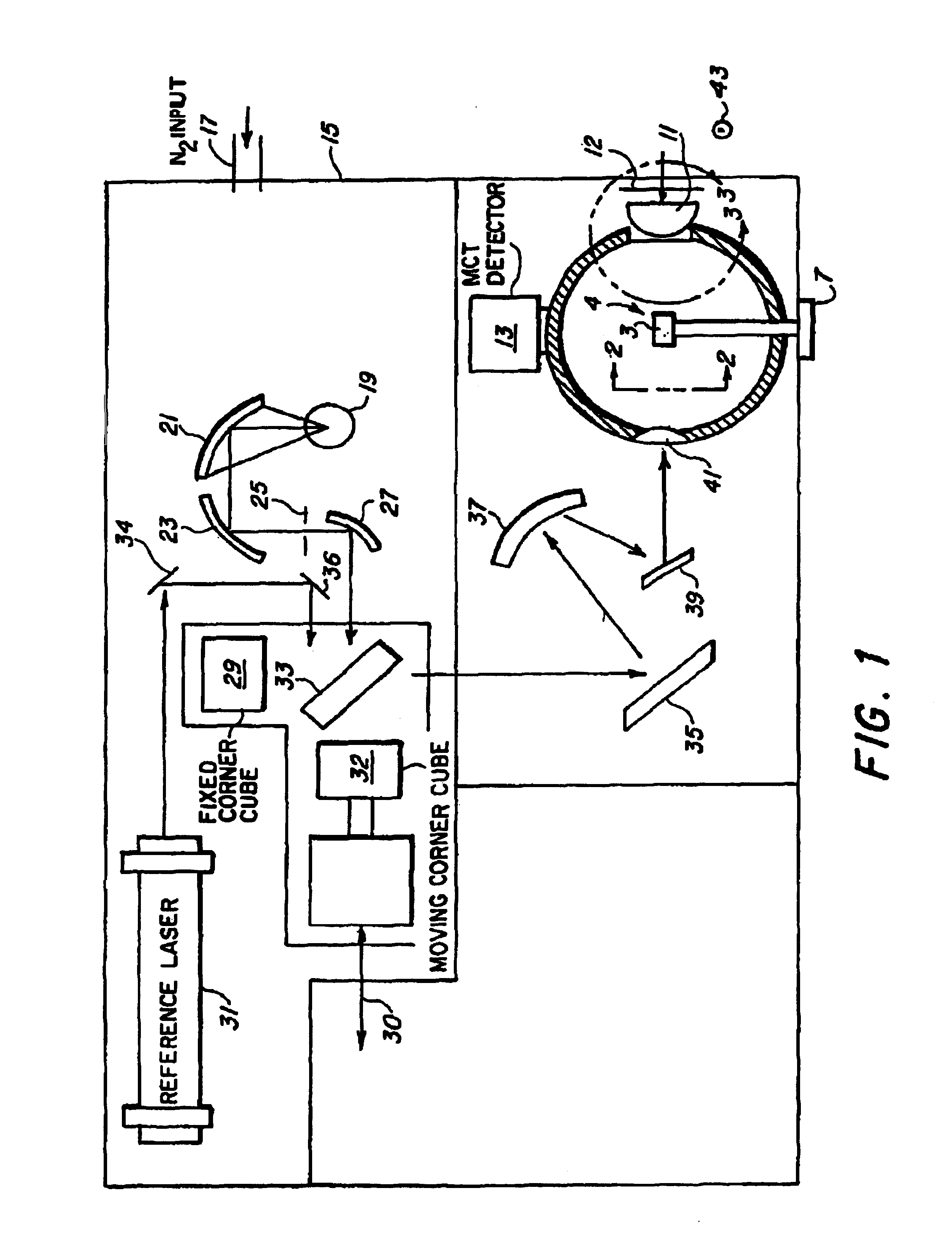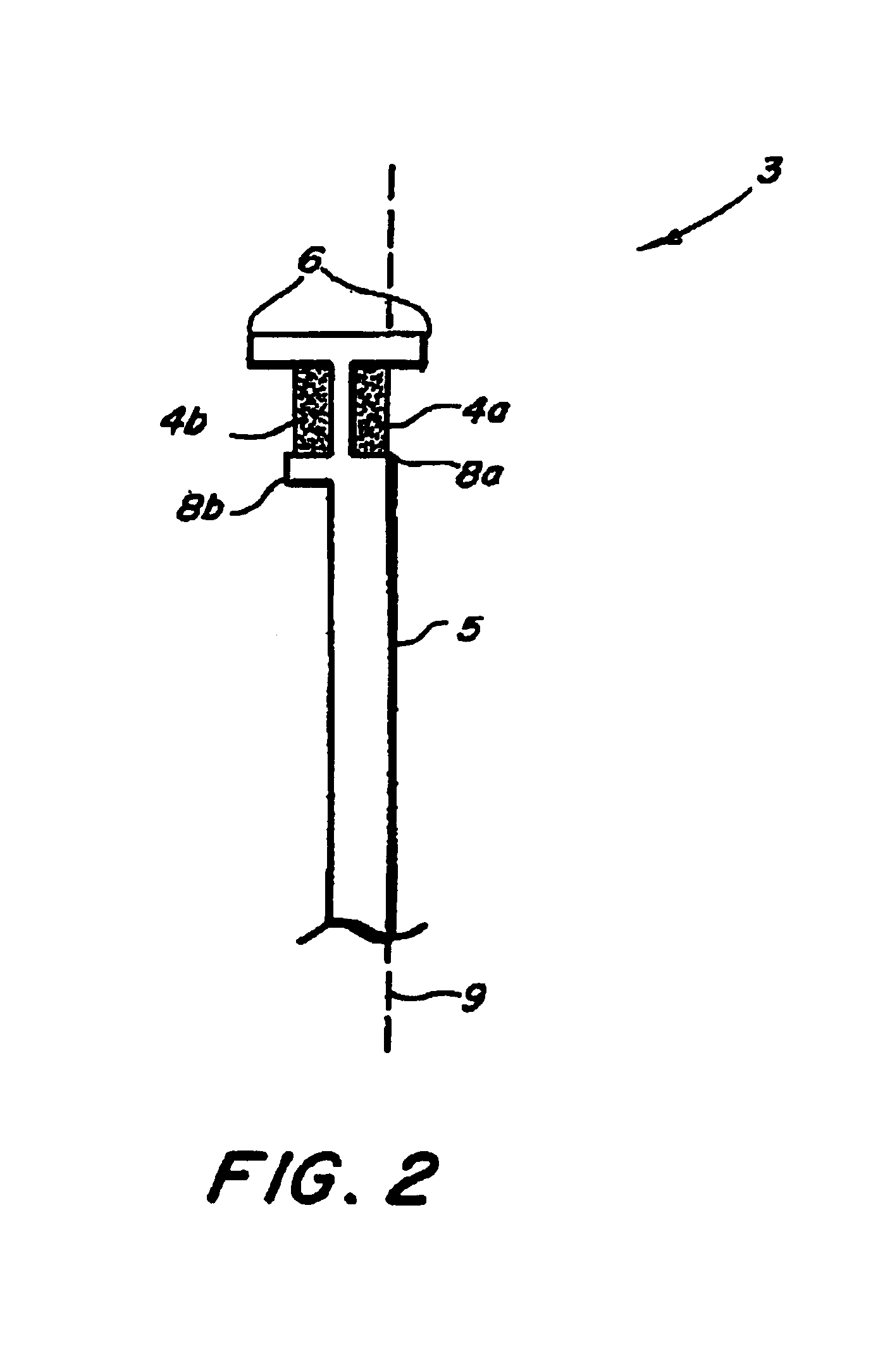Infrared integrating sphere
a technology of integrating spheres and infrared light, applied in the field of infrared integrating spheres, can solve the problems of inefficiency, inconvenient operation, and inability to generally agree upon reflectance standards,
- Summary
- Abstract
- Description
- Claims
- Application Information
AI Technical Summary
Benefits of technology
Problems solved by technology
Method used
Image
Examples
Embodiment Construction
[0010]Referring now to the drawings, wherein like reference numerals designate identical or corresponding parts throughout the several views, and with particular reference to FIG. 1, an integrating sphere 1 is shown disposed within an airtight chamber 15 under a non-absorptive atmosphere fed in at 17. Nitrogen is preferred because it has virtually no absorptance in the infrared, and as such provides a far better atmosphere for chamber 17 than, e.g., air, which contains much water vapor and carbon dioxide, each of which has characteristic infrared frequencies, and whose absorbtance would degrade infrared measurements taken by sphere 1. Chamber 15 has an appropriate door (not shown), so that one can get to the interior of sphere 1 between tests. Sphere 1 is a metal shell of, for example, nickel, whose inner surface is Lambertian (diffusely reflective). Such a surface can be generated by plating a highly reflective (preferably 95% or greater reflectivity) material onto a pre-roughened ...
PUM
 Login to View More
Login to View More Abstract
Description
Claims
Application Information
 Login to View More
Login to View More - R&D
- Intellectual Property
- Life Sciences
- Materials
- Tech Scout
- Unparalleled Data Quality
- Higher Quality Content
- 60% Fewer Hallucinations
Browse by: Latest US Patents, China's latest patents, Technical Efficacy Thesaurus, Application Domain, Technology Topic, Popular Technical Reports.
© 2025 PatSnap. All rights reserved.Legal|Privacy policy|Modern Slavery Act Transparency Statement|Sitemap|About US| Contact US: help@patsnap.com



